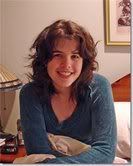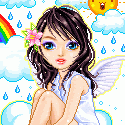Now, for those of you who do not follow Editorial Anonymous, YOU SHOULD. Her blog is geared towards those of us writing in the children's/MG/YA genres and contains tons of useful information about the genre and distinctions between the different "levels" of writing for those of us under the age of 18. In her words:
I'm a bit of a curmudgeon when it comes to these designations. I just don't care what "chapter book," "middle grade," or "YA" are currently supposed to mean. Why don't we simply speak in terms of ages, or grades?
That is, I think, a great way to identify your audience (ie: girls ages 11-13, or boys ages 15-17). However, since you need to correspond to the industry conventions when you're querying, I'm going to try to break this down in nifty list format, as is my way.
DISCLAIMER: The ages used as examples in these definitions should be treated as such. Also, unfortunately there is a lot of bleed over between children's literature and MG, and between MG and YA. It's confusing as hell and I'm not going to spend a boatload of time going through all of the exceptions. These are just rules of thumb.
1. CHILDREN'S LITERATURE: This is a messy term. It can mean, in various contexts, "all writing for those members of the human race who are currently not the age of majority" or "all writing for those members of the human race who are currently not over 10 years of age." This means that the agent who says she reps "children's literature" might represent anything from picture books to YA, and, generally, you can assume that she does unless she specifies otherwise.
I'd like to see "children's literature" correspond directly and without any muzzy edges to the second definition I provided. This means that it would include things like picture books, chapter books, and novels written for kids. (Think the books that are available at the Scholastic Book Fairs for elementary school students.) There are things you shouldn't write about in children's literature. Dropping the f-bomb is probably a no-no. So is negative characterization of parents and "trusted adult" types.
Children's literature (of the second type) is not MG. However, some may choose to read MG while they are still considered children's lit readers by the publishing world. This is perfectly fine. You should write your children's books with your intended audience in mind and let the individual reader decide what she wants to read.
2. MG: Stands for "middle grade." Should remind you of the term "middle school." MG is generally considered to be literature for those humans with 11-13 years of life under their belts. MG is not children's lit and it isn't YA lit either, and that seems to cause a lot of confusion. In MG, I would still, personally, be hesitant to tackle some of the issues we have no problem with tackling in YA lit - or, at least, tackling them in the same way. In MG literature, the author should generally have a negative view of "edgy" goings-on. Drugs can be taken, but they lead down a bad road. Flirtation can occur, but there should be no sex. Cursing and swearing is limited to things like "piss-face" and "dang!". If you want a good example of how to incorporate swearing into MG, I would look at the early Harry Potter books. And the later Harry Potter books, for that matter, to see the transition between fakey-swears and full-out-swears.
This seems to be the genre everyone forgets when talking about literature for under-18s. REMEMBER THAT IT EXISTS. Correct people when they tell you that their novel geared towards 12 year-olds is YA. Explain to people the difference when they complain that there is nothing in the YA section for their 13 year-old to read.
MG literature is not YA. However, some may choose to read YA while they are still considered MG readers by the publishing world. This is perfectly fine. You should write your MG books with your intended audience in mind and let the individual reader decide what she wants to read.
3. YA: Stands for "young adult." Emphasis on the "adult." You may write whatever you damn well please in a YA novel as long as you can write about it in a novel written for an adult audience. This means that anything with bestiality (or water sports, or graphic incest...), bloody graphic violence, and overly explicit sex (I will not answer what qualifies as explicit because you are all intelligent people and should know. If you really want a rule of thumb, it should probably not resemble this: "PENIS PENIS PENIS PENIS COCKKKK!!!!!!!!!!!" K?) will be a hard sell. You may use your discretion. Everyone has different opinions on what is appropriate or not in YA fic, but then again everyone has opinions on what is appropriate or not in adult fic as well.
The major distinction between MG and YA comes in two parts: first, the "coming-of-age." I define coming-of-age as having to deal with adult problems with a teenage mind. Remember the scene in Juno when she comes back home after learning that the potential adoptive father of her unborn child has decided to get a divorce? Her father asks her what she's been up to, and Juno responds: "Oh, nothing. I've just been out dealing with things way beyond my maturity level." Bam. Coming-of-age. Second, the edgy stuff I talked about previously is no longer dealt with in black and white terms. Now the characters are exposed to drugs, sex, and rock 'n' roll, and they decide for themselves how they feel about them.
So there it is folks. Rant over. Hope this cleared things up for some of you.


 Name: Bethany Griffin
Name: Bethany Griffin Name: Hannah Moskowitz Esq. (I have no idea what esq. means, but I like it.)
Name: Hannah Moskowitz Esq. (I have no idea what esq. means, but I like it.) Name: Sage
Name: Sage Name: Sasha Vivelo
Name: Sasha Vivelo Name: Suzanne Young
Name: Suzanne Young
9 comments:
Love the post. One comment about "children's literature"
You said this was a no-no:
negative characterization of parents and "trusted adult" types.
Don't know if that's true. There are chapter books about foster care and stuff. In fourth grade (for school!! so it was not relevant to my real reading level) I read a book that had a boy who was in foster care because his father drove his car over the kid's leg. That sounds really graphic now that I think about it. The dad actually hunted him down and hurt him again at the end of the book. Goddamn, what were those teachers having us read?
Haha. Okay: parents and trusted adult types should generally be portrayed in a positive light in picture books. This is only because issues like kidnapping, molestation, etc, should really be explained by parents (to their small children under the age of 5) in a way that does not rely on books.
Can we agree on that? I really don't think there should be a "Timmy's Daddy Beats Him" with pop up cardboard pictures and stuff.
And like I said, this list is by no means all-inclusive and definitely NOT the end-all-be-all. Discretion is everything.
Agreed.
>>>I really don't think there should be a "Timmy's Daddy Beats Him" with pop up cardboard pictures and stuff.
Omg I lol'd hard.
I have nothing much to say, except that I like the idea of suggesting ages as MG and YA are such vague terms.
well okay but it seems like this (the "no bad parental figures" guideline) would rule out traditionl fairy tales for children? snow white? hansel and gretal? but maybe people do indeed believe those stories are too dark for children these days.
Fairy tales were not originally intended for children. They were stories for adults, who in turn used them to put the fear of whatever into their children.
And fairy tales are really beside the point - they aren't being written now for today's audience. Sensibilities have changed a lot in the past 300 plus years. This post is really only germane to what's being published now and should only be applied to modern publishing.
In other words, fairy tales are one of the exceptions that I didn't want to enumerate. :)
oh okay.
Love the post
free classified india
Post a Comment